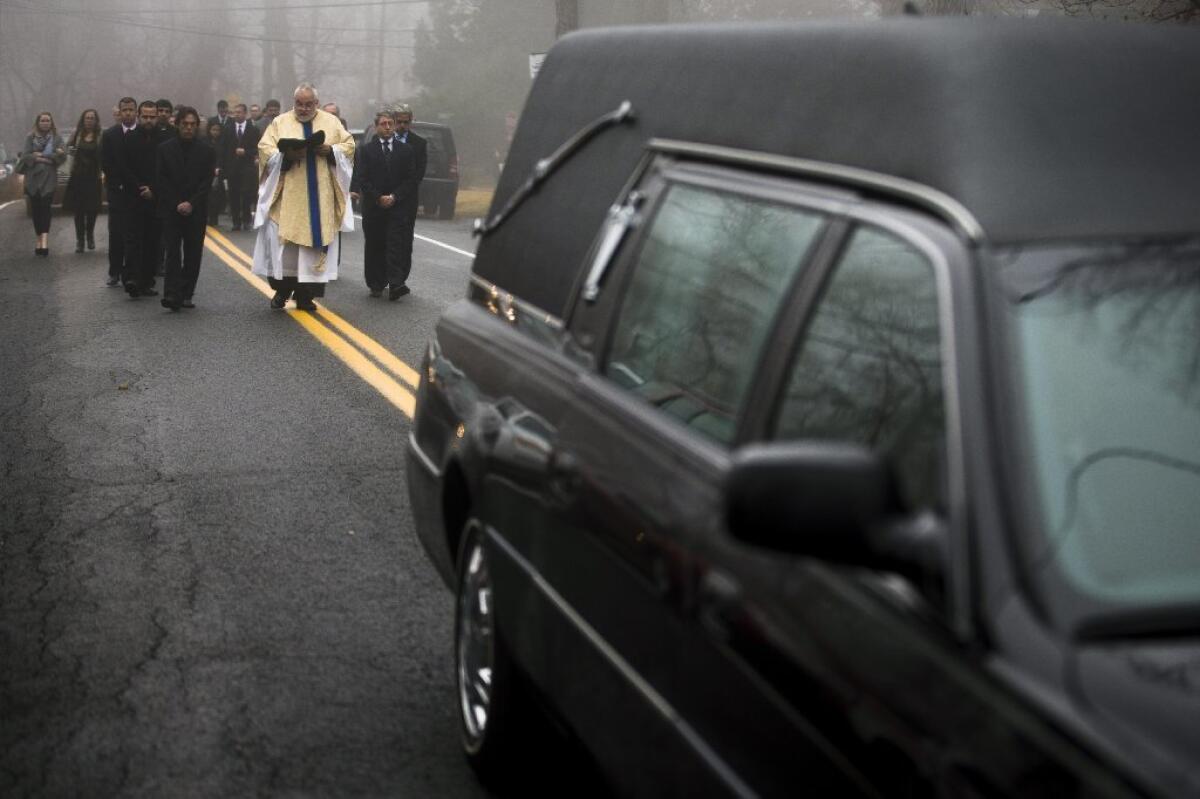NTSB: Fatal N.Y. train crash avoidable with recommended technology

NEW YORK -- A train derailment that killed four passengers could have been averted if the train had been equipped with recommended technology to automatically slow speeding trains, federal investigators said in the latest push to pressure railroads to implement the system.
The National Transportation Safety Board said Monday that investigators had found no problems with the speed sensors, brake controls or the so-called dead man’s pedal -- a sort of emergency brake -- of the Metro-North train that derailed on Dec. 1 in the Bronx.
The latest findings also raise more questions about the train engineer, William Rockefeller, who has admitted briefly losing focus as the seven-car passenger train roared into a 30 mph curve at 82 mph.
The operator of a train that passed Rockefeller’s train told investigators that Rockefeller had his headlight on high and did not dim it for the oncoming train as required by Metro-North. The trains passed each other at 7:11 a.m., about nine minutes before the derailment, bringing into question how long Rockefeller was inattentive prior to the crash.
Rockefeller, who has been suspended without pay, has told investigators he nodded off briefly. His lawyer, Jeffrey Chartier, told reporters last week that just before the crash, Rockefeller experienced “a daze” similar to road fatigue.
He remembers “operating the train, coming to a section where the track was still clear — then, all of a sudden, feeling something was wrong and hitting the brakes,” Chartier said after meeting with NTSB investigators. “He felt something was not right, and he hit the brakes.”
The NTSB says data recorders on the train show the brakes were not fully applied until five seconds before the engine at the rear of the train stopped. By then, the front cars had careened off the tracks.
Political leaders say the derailment underscores the need for the nation’s railroads to implement positive train control technology, which automatically slows or stops trains exceeding speed limits or on collision courses.
Railroads are supposed to have it installed by 2015 but many, including Metro-North, have been lobbying for a deadline extension, citing an estimated cost of at least $10 billion and the complexity of implementing the system on about 60,000 miles of track nationwide.
The NTSB opposes the extension and on Monday echoed Sen. Dianne Feinstein (D-Calif.), who last week said the crash was “preventable.”
“The NTSB believes that if positive train control technology was installed on this line and train, it would have required the engineer to slow the train to an appropriate speed or stop the train in the event the engineer did not do so, likely preventing the derailment,” the federal agency said. “The NTSB has been advocating for PTC for more than 20 years and it is on its Most Wanted List of transportation improvements.”
The NTSB has yet to interview all of the passengers who were on Metro-North’s train No. 8808, which had left Poughkeepsie, N.Y., shortly before 6 a.m. for Manhattan’s Grand Central Terminal, but the three assistant conductors who were on board have said the ride was normal until just before the derailment.
All the crew members, including Rockefeller, have tested negative for alcohol, and there is no evidence that Rockefeller was using his cellphone, according to the NTSB. Results of drug tests have not yet been released.
Tests have been performed on the train’s controls. “No anomalies were found,” the NTSB said. It also said investigators had tested the dead man’s pedal, which the engineer must keep depressed with his foot to keep the train moving.
“The pedal moved and released as expected,” the NTSB said. “No anomalies were noted.”
[For the record 7:20 a.m. PDT Dec. 11: An earlier version of this post said the accident occurred on Nov. 24. It happened Dec. 1.]
ALSO:
Newtown asks for privacy on first anniversary of massacre
Zimmerman’s girlfriend changes story: ‘I want to be with George’
Beached whales, all female or calves, died within feet of each other
Follow L.A. Times National on Twitter
More to Read
Start your day right
Sign up for Essential California for news, features and recommendations from the L.A. Times and beyond in your inbox six days a week.
You may occasionally receive promotional content from the Los Angeles Times.







